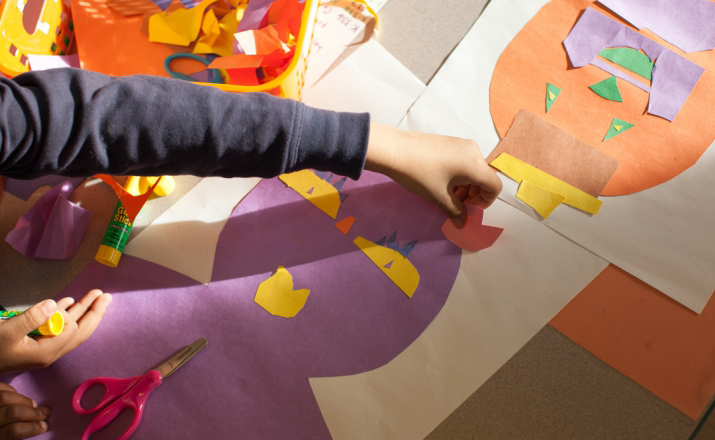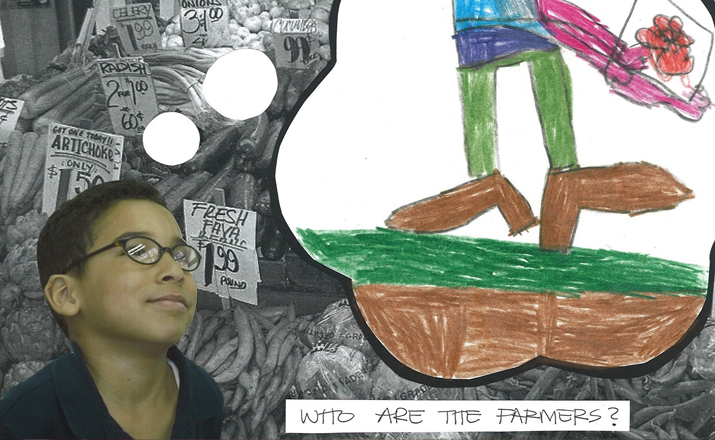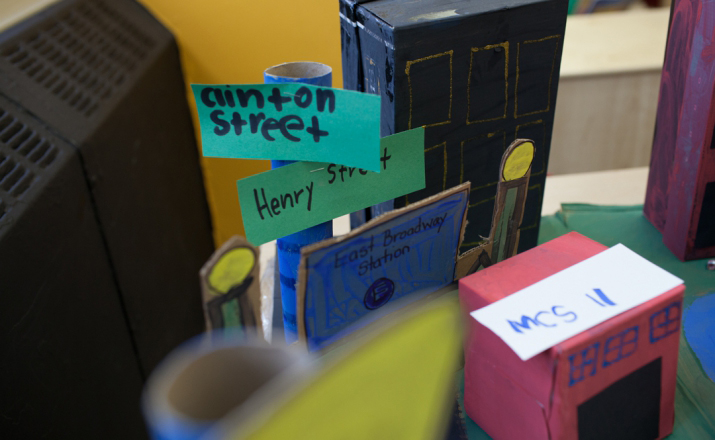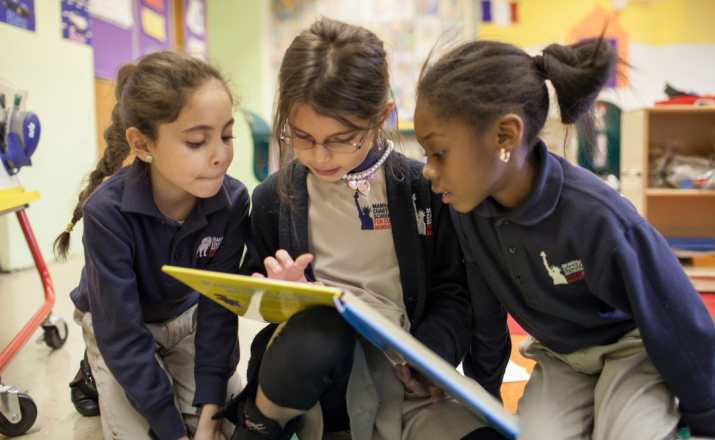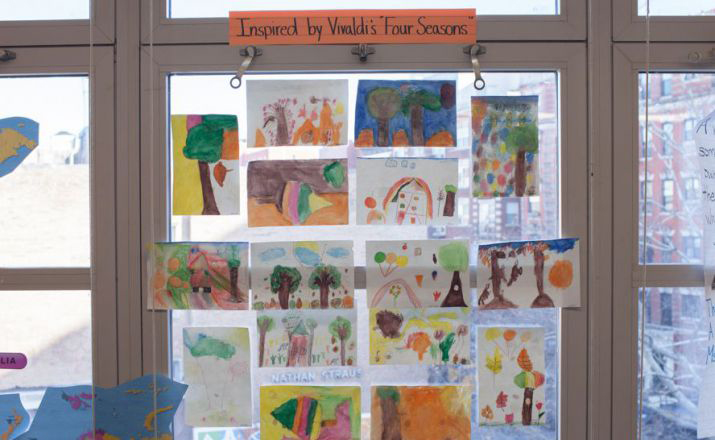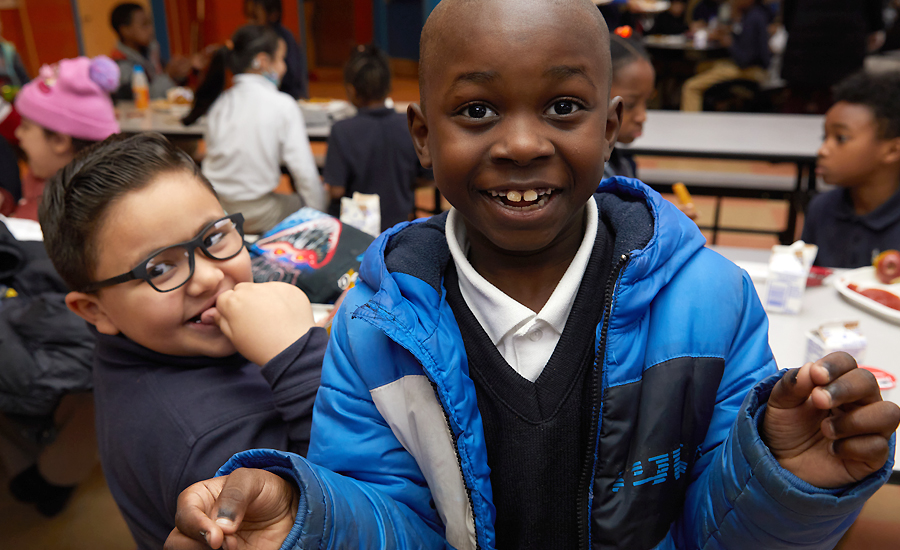Hands-On Learning
This small-world, extended-family feeling begins at the front door, where the school principal greets each student by name every morning, and knows every family. It carries over into hallways and classrooms full of familiar faces, where bonds forged between and among students and teachers help to ease transitions and increase gains from one subject and grade to the next. It permeates the classroom, where students work in small groups to solve problems and complete projects together, and teachers plan their lessons collaboratively.

Small classes mean our students begin their school careers and establish their learning patterns in an environment designed to build courage, confidence, and character. Every student knows, and is known by, their teachers, from whom they receive individualized attention, targeted instruction, and daily motivation to stay engaged, do their homework, and achieve their personal best.
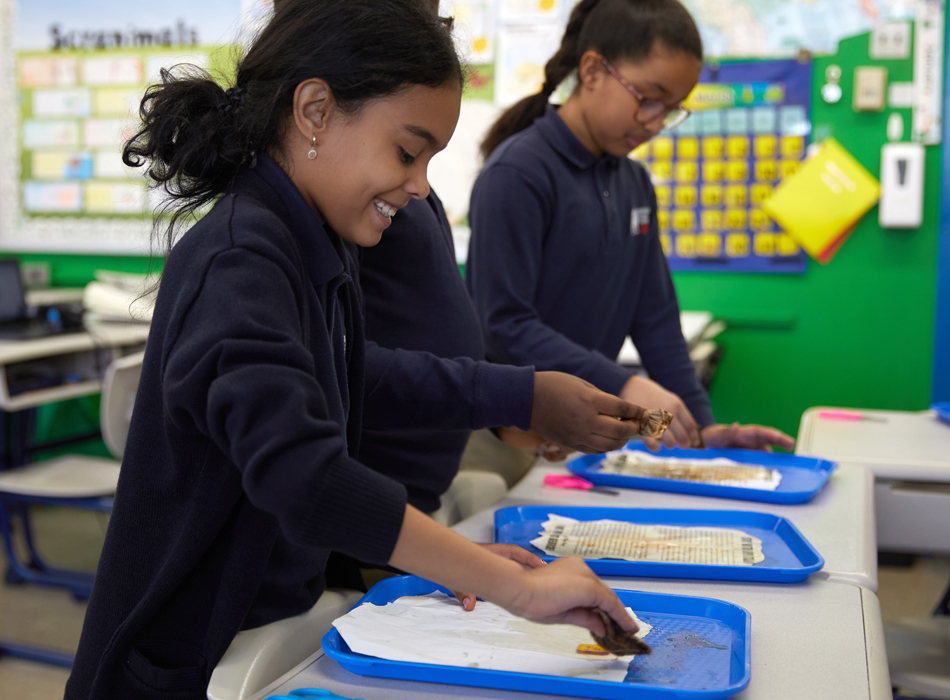
Using our community as classroom, we make our curriculum come alive for our students through interdisciplinary adventures centered around common themes. Lessons focus on personal identity, family legacy, and the local community, and involve visits to various locations in our Lower East Side neighborhood. Students also venture further afield to several of the city’s world class cultural institutions, including a trip to Philadelphia for students in 5th grade.
Murals with Meaning
In English Language Arts, students read picture books to see how color is used to depict human emotions. In humanities, they take guided community walks to study downtown street art, including Keith Haring, and travel uptown to see the work of the classical Mexican muralist Diego Rivera at the Museum of Modern Art. The unit culminates with students painting large “how I feel” self-portraits in art class.
Essex Market
In math, students learn about different monetary units and how to count and make change. In humanities, they study the needs and wants of different communities. Then they visit the nearby Essex Street Market, an assortment of more than 20 modern-day “pushcarts” under one roof, to interview vendors about customer purchases.
Delancey Street, Then & Now
In humanities, students study the history of immigration on the Lower East Side, learning what drove people from their home countries, simulating Ellis Island passage, and exploring what it was like to live in the neighborhood at the turn of the century. They tour the multiethnic Tenement Museum and study the stained glass windows at the historic Museum at Eldridge Street Synagogue.
Griots, Talking Drums & Trickster Tales
In English Language Arts, students study West African “trickster tales”—universal stories, originally passed down orally, in which the misadventures of an underdog trickster hero convey folk wisdom about human nature. In humanities, they study Ghana, relating the cultural values of the people back to the morals of the tales. And in music, they study traditional African songs and instruments.
The Italian Renaissance
In English, students research the artists and inventors who became cultural heroes of the Italian Renaissance in the 14th to 17th centuries and then choose specific biographies to read. In art class, they study Michelangelo and Leonardo da Vinci, visiting the Metropolitan Museum of Art to see the intermingling of art and science in their work. In music, they study opera and visit the Metropolitan Opera at Lincoln Center.
We believe much of our success is due to our small school size, which allows us to create an intimate learning environment, take an individualized approach to teaching, and build a strong sense of community that links our students, staff, and families in a common purpose.
